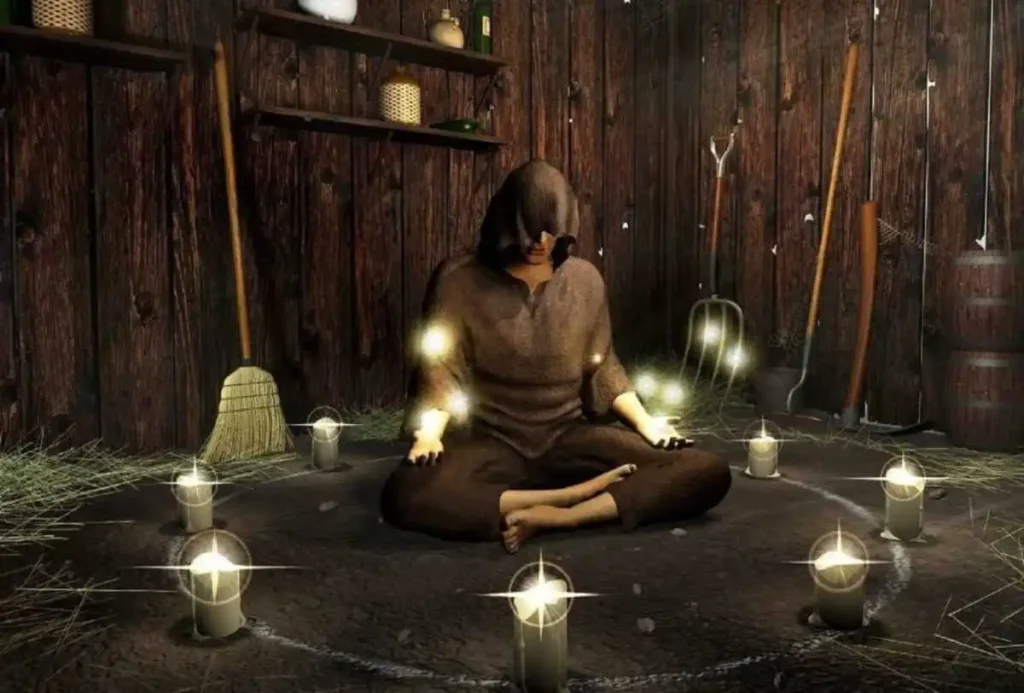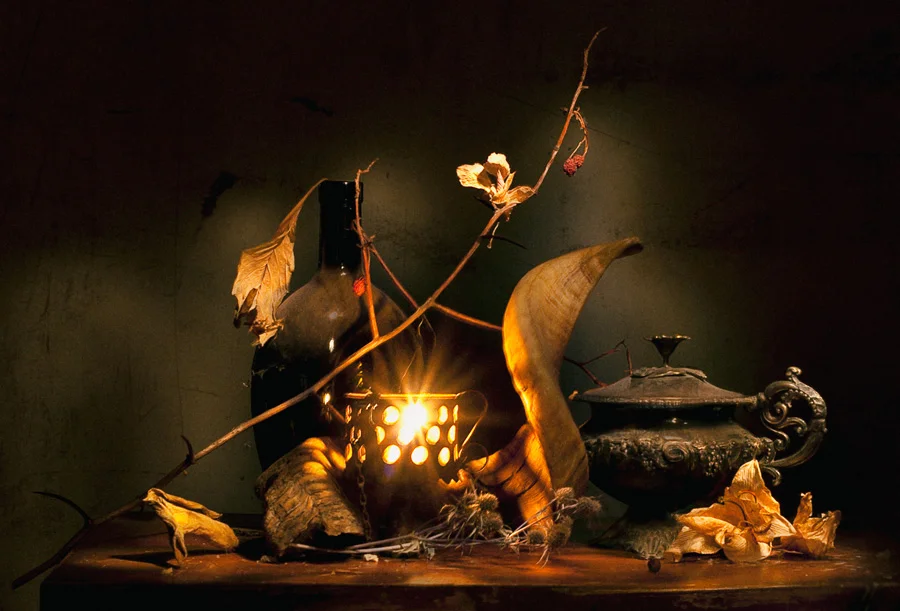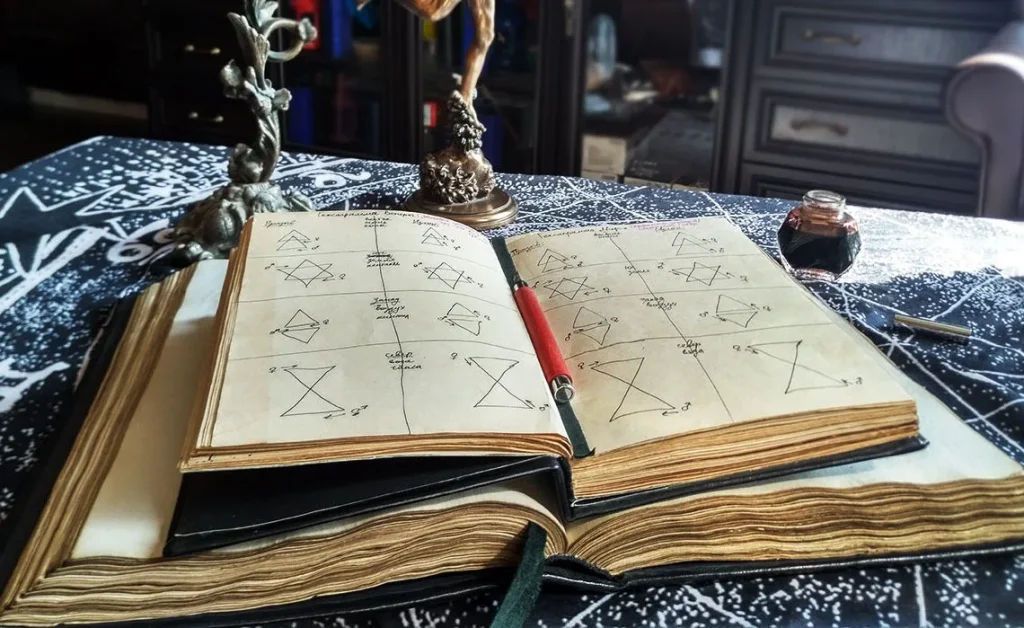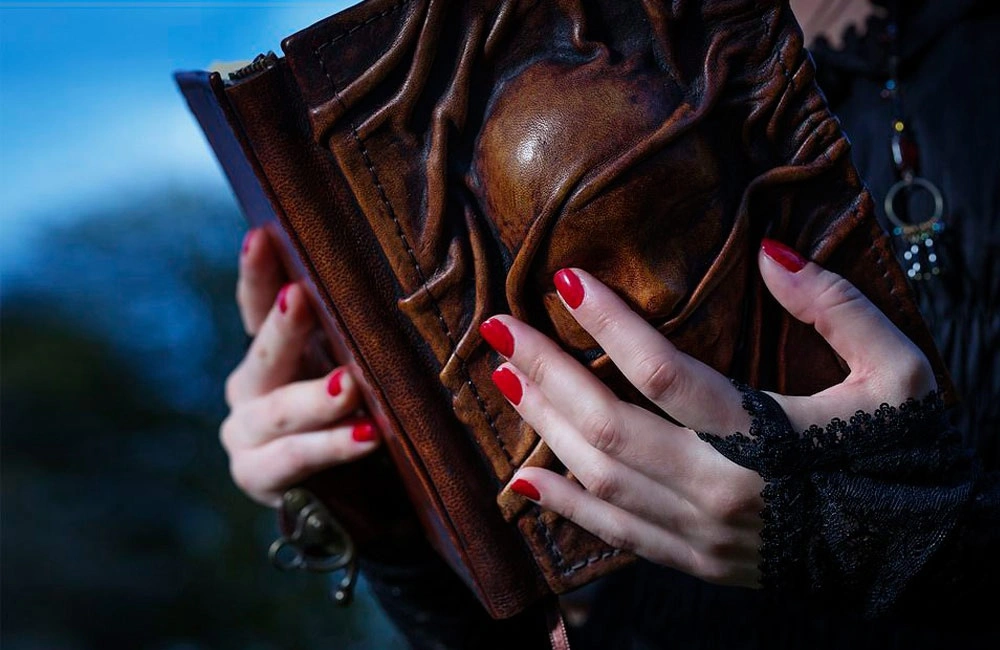For centuries, the art of witchcraft and witch symbols has mystified and intrigued people from all walks of life. Whether you’re drawn to the idea of harnessing natural energies, connecting with the spiritual world, or simply embracing a more magical existence, the path of a witch can be both empowering and fulfilling. In this article, we’ll explore the world of witchcraft and provide you with a comprehensive guide on “How can I be a witch?“.
How Can I be a Witch?
1-Understanding Witch Path
Witchcraft is a topic that has intrigued and puzzled people for centuries. Portrayed in folklore, literature, and media, witches often embody a mix of fascination and fear. To truly understand what it means to be a witch, we must delve beyond the stereotypes and explore the rich tapestry of beliefs and practices associated with witchcraft.
The Essence of Witchcraft
At its core, witchcraft is a spiritual and often magical practice that taps into the unseen energies of the universe. It is deeply rooted in the belief that individuals can influence and shape reality through intention, ritual, and connection with the natural world. To understand witchcraft, consider the following aspects:
Nature-Based Spirituality:
Many witches hold a profound reverence for nature. They believe that the Earth and its elements possess inherent wisdom and power. Nature is not just a backdrop but a sacred presence to be honored and respected.
Personal Power:
Witchcraft empowers individuals to recognize their own agency and potential. It emphasizes that each person possesses the ability to manifest change in their lives through focused intention and energy work.
Magic and Ritual:
Magic, in the context of witchcraft, is not about supernatural powers but about harnessing natural energies and symbolism to create change. Rituals, spells, and ceremonies are common tools used to work with these energies.


Historical Context
To understand modern witchcraft, it’s essential to recognize its historical context:
- Witch Hunts: The witch hunts of the Middle Ages and the Early Modern period were dark chapters in history. Thousands of individuals, mainly women, were accused of practicing witchcraft and subjected to persecution and often horrific torture and execution. These events were driven by superstition, religious zeal, and social upheaval.
- Wiccan Revival: In the mid-20th century, figures like Gerald Gardner and Doreen Valiente played significant roles in reviving interest in witchcraft. They popularized Wicca, a modern pagan witchcraft tradition that celebrates nature, the cycles of the moon, and the worship of a goddess and god.
Diversity of Practices
Witchcraft is not a monolithic practice; it encompasses a wide array of beliefs and traditions:
- Wicca: As mentioned earlier, Wicca is perhaps the most recognized form of witchcraft. It emphasizes a dualistic view of deity, the use of rituals, and adherence to the Wiccan Rede, which advocates doing no harm.
- Eclectic Witchcraft: Many contemporary witches are eclectic, drawing from various traditions and creating their unique path. They blend elements from different practices to suit their personal beliefs and preferences.
- Traditional Witchcraft: Traditional witchcraft often seeks to connect with historical practices and folk magic. It focuses on herbalism, working with spirits, and uncovering hidden wisdom.
2-Finding Your Witch Path
How can I be a witch? is not that easy or simple the Witchcraft is not a one-size-fits-all practice; it’s essential to find a path that resonates with you. Some popular paths within witchcraft include:
a. Wicca: Wicca is a modern pagan witchcraft tradition that emphasizes reverence for nature and the worship of a goddess and god. “Wicca: A Guide for the Solitary Practitioner” by Scott Cunningham is an excellent book for beginners on this path.
b. Traditional Witchcraft: Rooted in historical practices, traditional witchcraft focuses on folk magic, herbalism, and working with spirits. “Mastering Witchcraft” by Paul Huson is a classic resource in this area.
c. Eclectic Witchcraft: Eclectic witches draw inspiration from various traditions and create their unique practice. “To Ride a Silver Broomstick” by Silver RavenWolf is a valuable resource for those interested in an eclectic approach.
3-Building Your Knowledge
Embarking on a journey to become a witch involves a lifelong commitment to learning and self-discovery. Whether you’re drawn to the art of witchcraft for its spiritual aspects, white magical practices, or connection to nature, building your knowledge is a crucial step on your path. Here are essential steps and resources to help you on your way:
1. Start with the Basics
Begin by building a strong foundation in the fundamental principles of witchcraft:
- Read Widely: Dive into books that provide an overview of witchcraft. “Witchcraft Today” by Gerald Gardner or “To Ride a Silver Broomstick” by Silver RavenWolf offer insightful introductions.
- Explore Different Paths: Learn about the various traditions within witchcraft, such as Wicca symbols, traditional witchcraft, and eclectic practices. Understanding the diversity of paths will help you find what resonates with you.
2. Study Spellwork and Magic
People always wonder How can I be a witch? well the Magic is an integral part of witchcraft. and To do so you need to build your knowledge:
- Learn the Basics: Start with the basics of spellcasting, including setting intentions, crafting spells, and understanding correspondences (associations between witch herbs, crystals, colors, etc., and their magical properties).
- Practice Regularly: Practical experience is essential. Start with simple spells and gradually work your way up. Keep a magical journal to record your experiences and outcomes.
- Read Spellbooks: Books like “The Modern Witchcraft Spell Book” by Skye Alexander offer a wide range of spells for different purposes.
3. Explore Herbalism and Crystals
Many witches incorporate herbalism and crystal work into their practice:
- Herbal Magic: Study the magical properties of herbs and their uses in spells and potions. “Cunningham’s Encyclopedia of Magical Herbs” by Scott Cunningham is an invaluable resource.
- Crystals and Gemstones: Explore the energy and symbolism of crystals. Books like “Dark Crystal Witch” or”The Crystal Bible” by Judy Hall provide comprehensive information on crystals and their metaphysical properties.
4. Develop Divination Skills
Divination, the practice of seeking insight or guidance through tools like tarot cards, runes, or scrying, is an essential aspect of witchcraft:
- Select a Divination Method: Choose a divination tool that resonates with you. Tarot cards, for instance, are a popular choice for beginners.
- Study and Practice: Invest time in learning the magic symbolism and interpretation of your chosen divination method. Books like “The Tarot Bible” by Sarah Bartlett can guide you through tarot reading.
5. Explore Ritual and Ceremony
Witchcraft often involves rituals and ceremonies to connect with the spiritual world:
- Learn the Basics: Understand the structure and purpose of rituals, including casting a spell or casting a circle, invoking deities or energies, and grounding.
- Create Your Own Rituals: As you become more experienced, create personalized rituals that align with your intentions and beliefs.
- Books for Reference: “The Witch’s Book of Shadows” by Phyllis Curott and “To Ride a Silver Broomstick” by Silver RavenWolf provide insights into ritual practices.
6. Embrace Ethical Considerations
Witches typically adhere to ethical guidelines that emphasize harm none and respect for the free will of others. Understanding and applying ethical principles is crucial to responsible witchcraft.
7. Seek a Mentor or Join a Community
Connecting with experienced practitioners can provide guidance and support on your journey. Look for local witchcraft groups, online forums, or mentors who can share their knowledge and experiences.


Read More:https: 7 Spells for Lost Things
4-Rituals and Practices to be a Wtich
How can I be a witch? Becoming a witch involves a rich tapestry of rituals and practices that connect you with the spiritual realm, the natural world, and your own inner power. These rituals and practices are not only integral to witchcraft but also deeply personal expressions of your beliefs and intentions. Here are some essential rituals and practices to consider as you embark on your witchcraft journey:
1. Cleansing and Grounding
Before any magical or ritual work, it’s essential to cleanse and ground yourself. This helps you create a sacred space and prepare your mind and spirit for the work ahead.
- Cleansing Ritual: Use methods like smudging with sage or incense, sprinkling saltwater, or visualizing a purifying white light to cleanse negative energies from your space and yourself.
- Grounding Practice: Connect with the Earth’s energy by standing barefoot on the ground, meditating, or holding grounding crystals like hematite or black tourmaline.
2. Casting a Circle
Casting a circle is a fundamental ritual that creates a sacred and protected space for your magical work. This practice establishes a boundary between the mundane world and the spiritual realm.
- Tools: Use a wand, athame (ritual knife), or simply your finger to physically or energetically trace the circle’s perimeter.
- Invocations: Call upon the elements (earth, air, fire, and water) or deities that resonate with you to guard and bless your circle.
3. Invoking Deities and Energies
Depending on your path and beliefs, you may choose to work with specific deities, energies, or spirits during your rituals. Invoking these entities can provide guidance, protection, or assistance in your magical endeavors.
- Research: Study the deities or energies you wish to work with, understand their attributes and mythology, and establish a connection with them through meditation or prayer like prayer for breaking curses or even how to remove a curse?
- Offerings: Some practitioners offer offerings such as candles, incense, or food as a sign of respect and gratitude to the invoked entities.
4. Spellwork
Spellwork is the heart of many witchcraft practices. Spells are rituals that focus your intention and energy toward a specific goal, whether it’s for protection spells, healing, love rituals, or personal growth.
- Components: Gather the necessary components for your spell, such as herbs, crystals, candles, and written intentions.
- Visualization: Visualize your desired outcome clearly while performing the spell. Concentrate your energy on this intention.
- Timing: Consider lunar phases, days of the week, and planetary correspondences to enhance the effectiveness of your spell.
5. Divination
Divination is the practice of seeking insight or answers through tools like tarot cards, runes, or scrying. It’s a powerful way to tap into your intuition and the guidance of the universe.
- Study: Dedicate time to studying and practicing your chosen divination method regularly to become proficient.
- Trust Your Intuition: Trust your inner wisdom and intuition when interpreting divinatory symbols or messages.
6. Celebrating Sabbats and Esbats
Witches often celebrate the cycles of the moon and the changing seasons through Sabbats (seasonal festivals) and Esbats (moon rituals). These celebrations connect you with the natural rhythms of the Earth.
- Sabbats: Observe holidays such as Samhain, Beltane, or Yule to honor seasonal changes and the turning of the wheel of the year.
- Esbats: Conduct rituals during the full moon to harness its energy for magical workings, reflection, and personal growth.
7. Keeping a Magical Journal
Maintaining a magical journal is an invaluable practice that helps you track your progress, record insights, and reflect on your experiences as a witch.
- Record Rituals: Document your rituals, spells, and divination readings. Include details like date, time, tools used, and your emotional state like wiccan spells or witch spells.
- Personal Insights: Write down your thoughts, dreams, and intuitive impressions. Over time, you’ll create a treasure trove of personal wisdom.
8. Ethical Considerations
Witchcraft places a strong emphasis on ethical behavior and the principle of “harm none.” Always consider the consequences of your actions, and be mindful of the free will of others in your magical work.
5-Book Resources on How to Become a Witch?
Certainly, here is a list of “witchcraft books for begginers” that can serve as valuable resources for individuals interested in witchcraft, whether you’re a beginner or looking to deepen your practice:
1. “Witchcraft Today” by Gerald Gardner
- This classic book introduced Wicca, a modern pagan witchcraft tradition, to the world. It provides insights into the history and principles of witchcraft.
2. “To Ride a Silver Broomstick” by Silver RavenWolf
- A beginner-friendly guide that covers various aspects of witchcraft, including spells, rituals, and Wiccan traditions.
3. “The Modern Witchcraft Spell Book” by Skye Alexander
- A comprehensive resource for spellcasting, offering a wide range of spells for different purposes.
4. “Cunningham’s Encyclopedia of Magical Herbs” by Scott Cunningham
- An invaluable reference for herbalism in witchcraft, providing information on the magical properties of herbs and how to use them in spells and potions.
5. “The Crystal Bible” by Judy Hall
- A comprehensive guide to crystals and gemstones, including their metaphysical properties and how to incorporate them into your practice.
6. “The Complete Book of Tarot” by Juliet Sharman-Burke
- An excellent starting point for those interested in tarot divination, covering the meanings of tarot cards and how to read them.
7. “Mastering Witchcraft” by Paul Huson
- This book delves into traditional witchcraft practices, including folk magic, herbalism, and working with spirits.
8. “The Witch’s Book of Shadows” by Phyllis Curott
- Provides insights into modern witchcraft, focusing on spiritual aspects, rituals, and ethical considerations.
9. “Buckland’s Complete Book of Witchcraft” by Raymond Buckland
- A comprehensive guide that covers the basics of witchcraft, including rituals, spellwork, and history.
10. “Wicca: A Guide for the Solitary Practitioner” by Scott Cunningham
- An essential book for solitary witches practicing Wicca, offering practical guidance and rituals.
11. “The Green Witch” by Arin Murphy-Hiscock
- Explores the path of the green witch, emphasizing herbalism, nature connection, and earth-centered spirituality.
12. “The Witch’s Book of Shadows: The Craft, Lore & Magick of the Witchcraft” by Phyllis Curott
- A guide that combines personal experiences with practical advice on witchcraft, rituals, and ethical considerations.
13. “Witchery: Embrace the Witch Within” by Juliet Diaz
- A modern witch’s guide to embracing your inner witch, exploring rituals, spells, and self-discovery.
14. “Traditional Witchcraft: A Cornish Book of Ways” by Gemma Gary
- Offers a glimpse into traditional witchcraft practices, particularly those rooted in the Cornish tradition.


6-Joining a Witch Community: Finding Your Magical Tribe
How can I be a witch using Witch Community? For those on a witchcraft journey, finding a supportive and like-minded community can be both enriching and empowering. Witch communities offer a space for learning, sharing experiences, and connecting with fellow practitioners. Whether you’re a beginner seeking guidance or an experienced witch looking for kindred spirits, here’s how to go about joining a witch community:
1. Online Communities
In today’s digital age, online platforms have become a hub for witches to connect, share knowledge, and discuss their experiences. Consider exploring the following online resources:
- Witchcraft Forums: Websites like WitchcraftForum.org, The Cauldron: A Pagan Forum, and Reddit’s r/witchcraft provide discussion boards where witches from around the world exchange ideas and seek advice.
- Social Media: Platforms like Instagram, Tumblr, and Pinterest have vibrant witchcraft communities. Look for relevant hashtags like #witchcraft, #witchesofinstagram, or #pagan to find fellow practitioners.
- YouTube: Many witches share their rituals, spellwork, and insights on YouTube channels dedicated to witchcraft. You can also participate in live streams and Q&A sessions.
2. Local Meetup Groups
If you prefer face-to-face interactions, consider searching for local witchcraft or pagan meetup groups in your area. Websites like Meetup.com often host listings for these gatherings. Attending local events or meetings can provide you with a chance to connect with fellow witches in person, share knowledge, and build friendships.
3. Attend Workshops and Classes
Many metaphysical and new age stores, as well as community centers, offer workshops and classes on witchcraft-related topics. These events can be a great way to meet fellow practitioners, learn from experienced teachers, and deepen your understanding of the craft.
4. Seek a Mentor or Teacher
Finding a mentor or teacher can be an invaluable experience on your witchcraft journey. A mentor can offer guidance, answer questions, and provide personalized instruction. Look for mentors within your local community or through online networks and forums.
5. Attend Pagan or Witchcraft Festivals
Pagan and witchcraft festivals are held in various locations throughout the year. These gatherings often feature workshops, rituals, and opportunities to connect with practitioners from diverse backgrounds. Research and consider attending one of these events to immerse yourself in the witchcraft community.
6. Create Your Own Community
If you can’t find a local group that aligns with your interests and beliefs, consider creating your own witchcraft community. Host open circles, workshops, or study groups to attract like-minded individuals in your area. You might be surprised at how many people are looking for a community just like you are.
7. Be Respectful and Mindful
When joining a witch community, it’s essential to approach it with respect and an open mind. Be respectful of different beliefs, traditions, and practices within the community. Remember that not all witches follow the same path, and diversity of thought and practice is one of the community’s strengths.
8. Build Meaningful Connections
Building relationships within the witchcraft community takes time and effort. Attend events regularly, engage in discussions, and offer your own insights and experiences. The more you contribute to the community, the more you’ll get out of it in return.
Conclusion
To answer the question of “How can I be a witch?” is a deeply personal and transformative journey. While books are valuable resources, remember that practice, dedication, and self-discovery are equally important aspects of witchcraft. As you delve into this enchanting world, embrace the opportunity to connect with nature, harness your inner power, and cultivate a deeper understanding of the mysteries of the universe. Your path as a witch is uniquely yours, and the journey is as magical as the destination.


Pingback: 6 Steps on How Can I be a Witch: A Beginner's G...